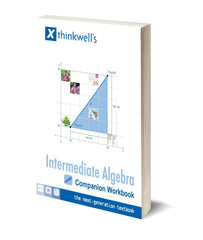11.1 Inverse Functions
11.1.1 Understanding Inverse Functions
11.1.2 The Horizontal Line Test
11.1.3 Are Two Functions Inverses of Each Other?
11.1.4 Graphing the Inverse
11.1.5 Finding the Inverse of a Function
11.2 Exponential Functions
11.2.1 An Introduction to Exponential Functions
11.2.2 Graphing Exponential Functions: Patterns
11.2.3 Graphing Exponential Functions: More Patterns
11.2.4 The Number e
11.3 Using Exponential Functions
11.3.1 Using Properties of Exponents to Solve Exponential Functions
11.3.2 Finding Present and Future Value
11.3.3 Finding an Interest Rate to Match Goals
11.4 Logarithmic Functions
11.4.1 An Introduction to Logarithmic Functions
11.4.2 Converting between Exponential and Logarithmic Functions
11.4.3 Graphing Logarithmic Functions
11.4.4 Matching Logarithmic Functions with Their Graphs
11.5 Properties of Logarithms
11.5.1 Properties of Logarithms
11.5.2 Expanding a Logarithmic Expression with Properties
11.5.3 Combining Logarithmic Expressions
11.6 Evaluating Logarithms
11.6.1 Finding the Value of a Logarithmic Function
11.6.2 Solving for x in Logarithmic Equations
11.6.3 Using the Logarithmic Change of Base Formula
11.6.4 Evaluating Logarithmic Functions with a Calculator
11.7 Exponential and Logarithmic Equations
11.7.1 Solving Exponential Equations
11.7.2 Solving Logarithmic Equations
11.7.3 Solving Equations with Logarithmic Exponents
11.8 Applications of Exponential and Logarithmic Functions
11.8.1 Compound Interest
11.8.2 Predicting Change
11.9 Exponential Growth and Decay
11.9.1 An Introduction to Exponential Growth and Decay
11.9.2 Half Life
11.9.3 Newton's Law of Cooling
11.9.4 Continuously Compounded Interest






